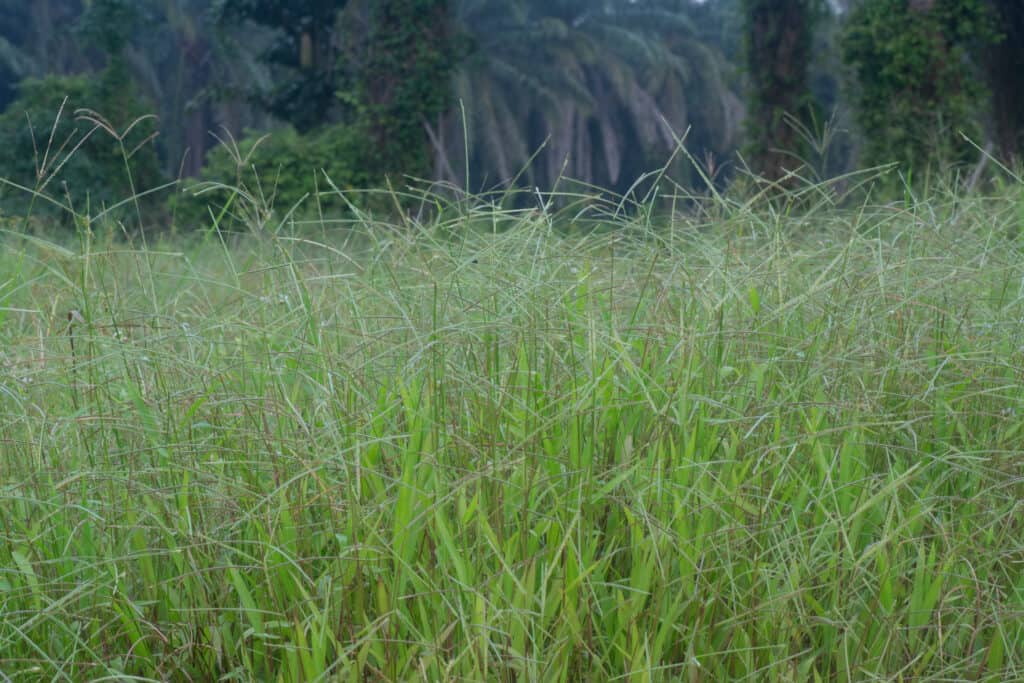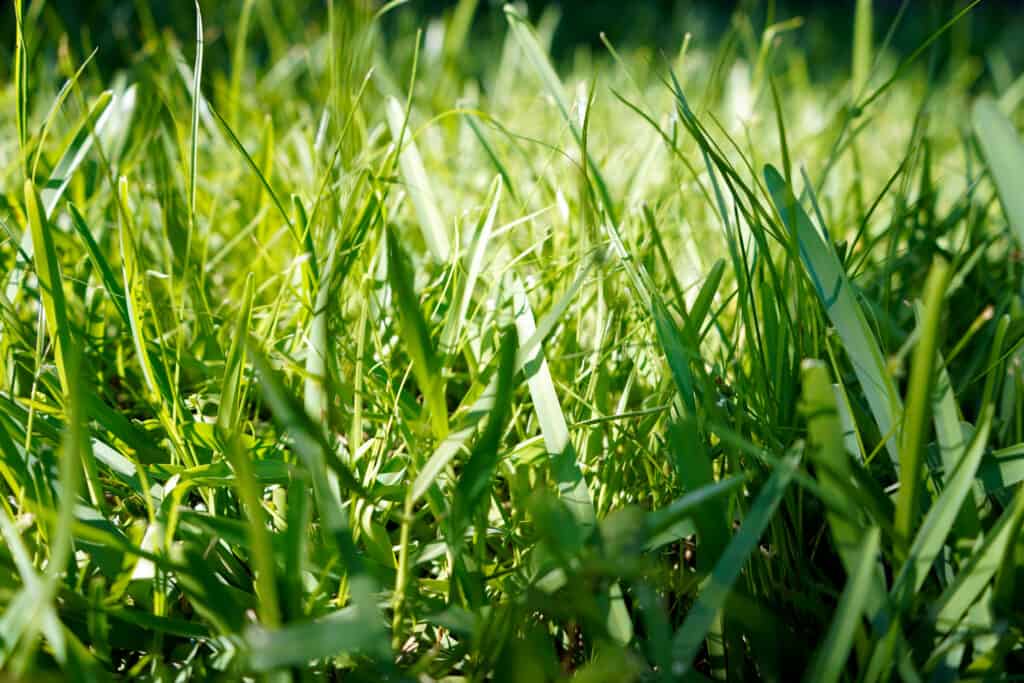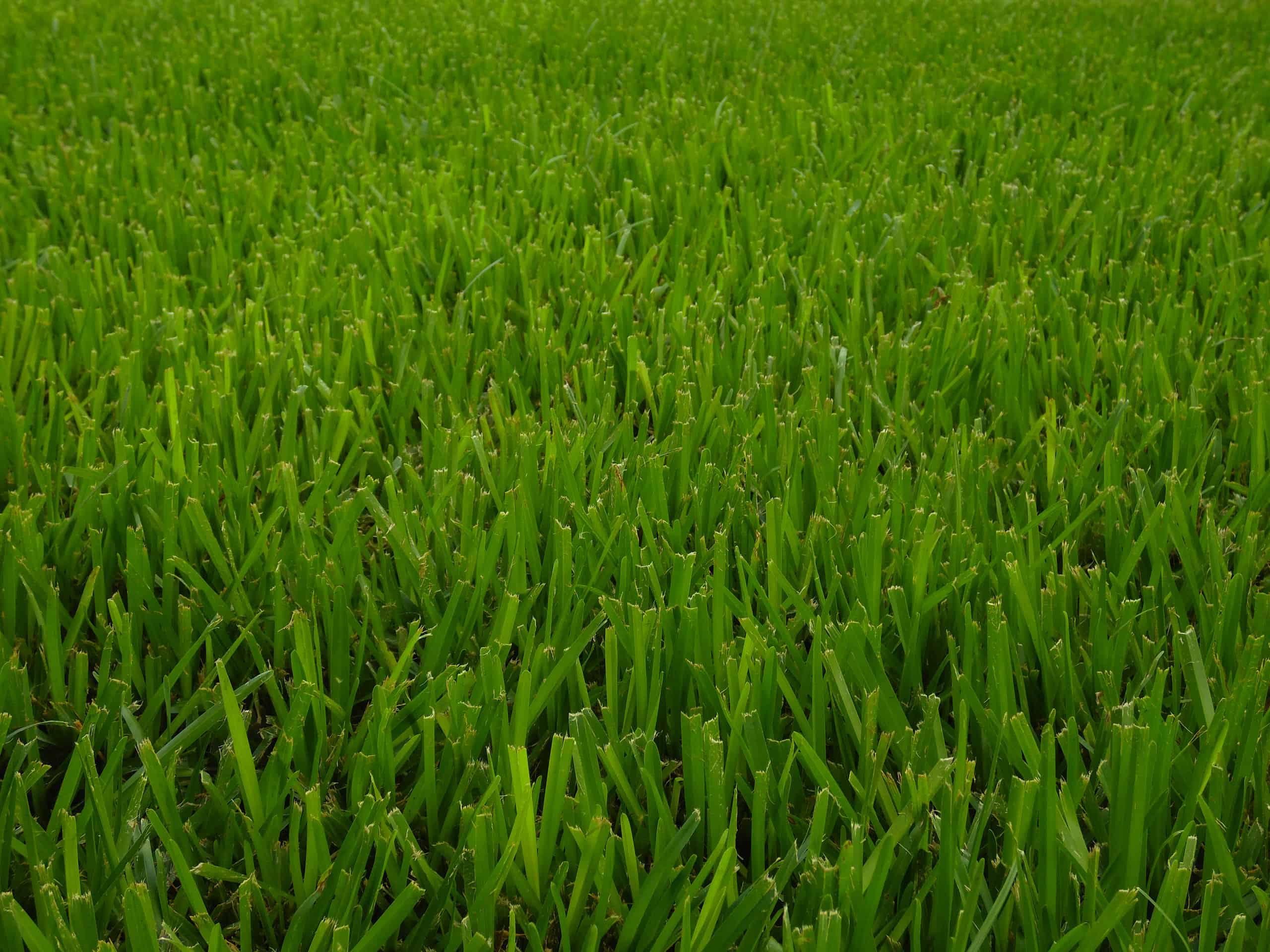A lawn is just a lawn, right? It may be easy to think that all grass is created equal. But, in reality, there are some distinct differences between grass species. If you are considering re-sodding your yard or are interested in establishing a quality pasture for your livestock, the type of grass you choose matters.
This article will look at two distinct species, Bahia grass (Paspalum notatum) and St. Augustine grass (Stenotaphrum secundatum). You will discover what traits they have in common, as well as how they differ.
Bahia Grass vs. St. Augustine Grass: Comparison
To fully understand the differences between Bahia grass and St. Augustine grass, it is helpful to explore specific categories. The chart below explores some of the key characteristics of each species.
Bahia grass (Paspalum notatum) and St. Augustine grass (Stenotaphrum secundatum) are great additions to low-maintenance lawns of homes or businesses. Additionally, they are excellent additions to your pasture, as feed for livestock or to grow as hay. You will also find both species used in erosion control.
Despite these similarities between Bahia grass and St. Augustine grass, the two have some significant differences. The primary ones are their origins, leaves, seed heads, and growing requirements. Below, we explore each of these categories more in-depth.
| Bahia Grass | St. Augustine Grass | |
|---|---|---|
| Scientific Classification | Paspalum notatum | Stenotaphrum secundatum |
| Common Name(s) | bahia grass, bahia | Buffalo grass, St. Augustine grass, Charleston grass, pimento grass |
| Origins | Native to South America. It became naturalized in the southeastern US after getting introduced for erosion control. | Shores of the Atlantic Ocean. |
| Uses | Pasture grass (especially in woodland areas), erosion control in drought-stricken areas, and low-maintenance turf. | Turf grass, pasture grass, erosion control near ocean areas. |
| Size | The stems reach 8-30 inches long. | Shorter in stature, reaching only about 6 inches tall. |
| Leaves | Typically hairless, tough, flat, folded, and in-rolled. The ⅛-¼ inch wide blades grow from 8-20 inches long. They also taper to a point at the end. | Smooth on both sides, flat, and end in a blunted tip. Slightly hairy and blue-gray blades that grow from 1-6 inches long and only reach a maximum width of 0.5 inches. |
| Seed Head | At the top of the slender stem, terminal, dual racemes grow. Occasionally, a third seed head will form below the duo. | Does not produce many viable seeds. Singluar seed head develops at the top of a thick stalk |
| Growing Requirements | Needs a soil pH of 5.5 – 6.5 and will not grow in high-pH soil (above 6.5). Grows best in sandy, drought-prone, and lower fertility soil. | Highly shade tolerant, has medium watering needs, and prefers soil with a clay or sandy loam consistency. It is frost tolerant and can withstand boggy or flooded periods. But it is not drought-tolerant. |
| Fun Facts | You can intercrop white clover (Trifolium repens), crimson clover (Trifolium incarnatum), and arrowleaf clover (Trifolium vesiculosum). | Its inflorescences can spread via saltwater. |
Bahia Grass vs. St. Augustine Grass: Origin
Bahia grass is native to South America. It is common throughout Central and South America and the West Indies. After getting introduced in the southeastern United States for erosion control and grazing, it became naturalized in that region.
However, St. Augustine grass stands in stark contrast to Bahia grass. It is native to the Atlantic seaboard and naturally spread along the coast due to the ability of its inflorescences to withstand some sea travel.
Bahia Grass vs. St Augustine Grass: Leaves
The leaves of Bahia grass are tough, flat, in-rolled, and typically hairless. They are relatively thin, with ⅛-¼ inch wide blades. However, they grow long, reaching anywhere between 8 and 20 inches. And they also taper to a point at the end.
On the other hand, the leaves of St. Augustine grass are slightly wider, reaching a maximum width of ½ inch. They are blue-gray, smooth on both sides and somewhat hairy. Their flat appearance ends in a rounded and blunted tip. And the blades grow significantly shorter, reaching only roughly 1-6 inches long.

Bahia grass grows quite tall and develops tough seed heads.
©Young Swee Ming/Shutterstock.com
Bahia Grass vs. St. Augustine Grass: Seed Heads
The seeds of Bahia grass are highly prolific. Typically, a seed head duo develops on the tapered stem’s end. Occasionally, a third may show up below the terminal pair of racemes. These seeds are an important food source for wildlife, such as small mammals, deer, and birds. However, they can be toxic to cattle if eaten in too large of a quantity.
In contrast, St. Augustine Grass produces few viable seeds. The seed heads grow as singles at the end of a thick stalk that protrudes above the leaves. They may develop flowers with a white-brown color.
Bahia Grass vs. St. Augustine Grass: Growing Requirements
Bahia grass is a deep-rooted perennial and is highly prolific. Its scaly, stout rhizomes allow it to spread into a dense sod. It is more shade tolerant than other popular grasses, such as Bermuda grass.
Additionally, it grows well in sandy, low-fertility, or drought-prone soil. The only factor that Bahia grass is picky about is the soil pH. It does not tolerate pH levels above 6.5. You can establish Bahia grass in your lawn or pasture using seed or sod. However, opt for spring or early summer months to best plant Bahia grass, as there will be adequate moisture during these months. It has a slow germination rate, so it may take a few months for your new Bahia grass to get fully established.
On the other hand, St. Augustine grass flourishes in moisture-rich regions. So it can survive flooding and overwatering. So, it is popular for erosion control near shorelines.
The deep-rooted turf grass is highly shade tolerant. It spreads by stolons and forms a dense and leafy sod. This popular grass can is easy to establish from plugs or sod. And while it prefers sandy loam or clay soils, it will do well in any area with decent soil fertility. Additionally, St. Augustine grass does best in slightly acidic to neutral soil.

St. Augustine grass needs ample water to maintain its lush, green appearance.
©JennLShoots/Shutterstock.com
Thank you for reading! Have some feedback for us? Contact the AZ Animals editorial team.








